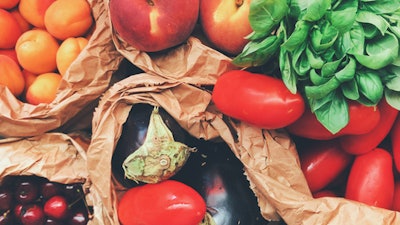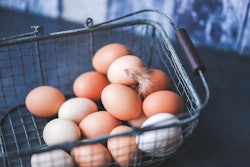
The Coronavirus disease (COVID-19) is only the latest--if most urgent--reminder of the many issues facing food supply chain logistics today. The current problem, which involves supply chains adapting to a sudden dip in restaurant visits and unexpected demand for items such as flour, yeast and frozen vegetables, is just one of a greater swath of challenges waiting to be resolved.
Once the curve of the virus flattens, logistics networks will once again find themselves facing the challenges pushed on the back burner. How do supply chains address the more refined palate of developed-world consumers, who prefer free-range chicken to factory-raised, finicky Honeycrisp apples to more resilient strains such as Golden Delicious? What about the fluctuating global trade restrictions brought on by the latest batch of protective politicians? Or keeping organic food fresh and attractive on its long journey from farm to grocery store shelf?
The challenges, in other words, won’t end with the management of COVID-19. If we address the surge in consumer discernment and adapt to some of the world’s biggest supply chain challenges, it is time to think about how new technology can embed in existing networks and optimize outcomes.
How consumer choice became a driving factor for producers
In the last 15 years or so, consumers have reaped the benefits of efficient logistics networks. Yellowfin tuna can be caught in Madagascar, processed and overnighted to grocery store shelves in London in less than two days. International trade agreements such as NAFTA have ensured that an array of produce, such as blueberries and brussels sprouts, becomes available year-round, shipping quickly and packaged effectively so that it is delivered fresh, even in organic form.
Consumers have adapted to this boon in supply logistics, and some other concurrent cultural trends, such as a surge in interest in organic and gluten-free foods, by becoming more choosy. They want food that not only keeps them healthy, but also comes from humanely treated animals raised in sustainable ways. Interest in global cuisines and new flavors has also surged.
A stretched supply chain
The increased consumer demand for variety stresses supply chains in several ways. How do you keep a very perishable fruit, such as the peach, fresh and beautiful despite having to be handled by multiple people and loaded into different vehicles? How do farmers keep up with demand in increasingly unstable weather patterns? Listeria-free organic lettuce, keto-friendly frozen foods and even narco-free avocados are just a few of the other challenges that logistics networks face.
All these demands also lead to a disproportionate amount of waste. Up to 40% of food is lost or wasted in the global supply chain, most of it before it reaches consumers. When you consider the existence of “food deserts” in poor communities, this waste becomes a loss not just in terms of profit, but also for society as a whole.
How to make the food supply chain more efficient
The good news in this dire picture is that a combination of tech and biological innovations are poised to reduce waste, improve harvest handling and storage and meet the refined palate of the modern consumer.
To slow the aging of produce while keeping it organic, companies such as Appeal and AgriFresh are developing organic alcohols and gases that can be applied in shipping containers. Smart sensors by innovators such as Centaur Analytics are being deployed to manage post-harvest processing and delivery, so that supply chain managers can trace product quality during the delivery processing, adjusting variables such as temperature as needed. “Ugly” produce can then be redirected from supermarkets (who generally throw such produce away) to producers who can use it for dehydration, milling or other types of processing. KDC Ag, which converts food waste into feed and fertilizer, is an example of one such company.
The innovations don’t end after delivery. Those “sell by” or “use by” dates are stamped based on production schedules; by optimizing production, too, we can bring more flexibility into consumption. Vertical farming, regenerative ag and non-browning produce promise to tweak the food supply chain to become even more efficient. Better types of medicine for animals, more sustainable feed and even gene editing are poised to streaming production for animal growers as well.
The opportunity ahead
Right now, supply chains’ biggest challenge lies in adapting to the influx of issues wrought by COVID-19. Once the virus is managed, the industry will turn back to the truths that have been guiding it for the past several years.
One, that consumer tastes have changed, and two, that we are in a time of enormous disruption and innovation in ag and animal health.
Together, these two trends will converge. While there is no magic pill to fix every supply chain challenge we face, we are also in an era of unprecedented opportunity. Supply chain and logistics leaders who harness these opportunities stand to seal the future not only of their organizations, but of the supply chain itself.















